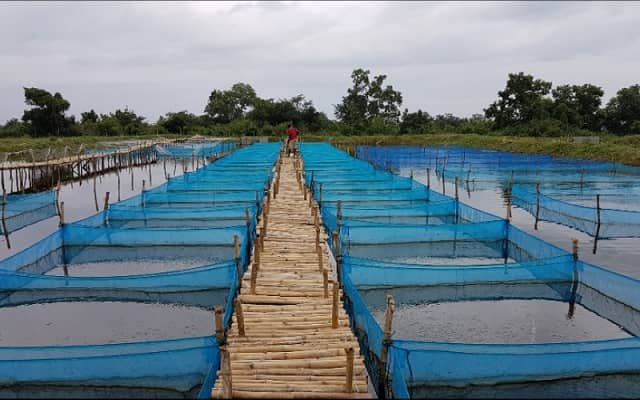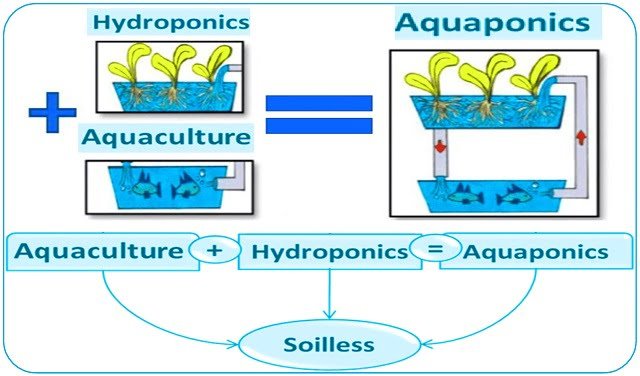
Theoretically, it has been argued that aquaculture could help alleviate fishing pressure on wild populations. Additionally, the connection between fishing and aquaculture has been emphasized, not only to meet the demand for seafood, but also because many aquaculture species rely on fisheries for their feed and seed supply.
In this regard, it’s important to determine how and when different types of aquaculture alleviate or exacerbate pressures on wild fish and seafood populations, in order to produce food sustainably and implement more holistic management strategies.
Researchers from the University of California, University of Leeds, and Griffith University conducted a global classification of aquaculture animals based on the way they are produced (capture-based aquaculture or domesticated aquaculture) and simulated two potential scenarios of increased production of these forms of aquaculture to better align how they assist fishing and food security.
Based on their classification, they explored where aquaculture can help alleviate fishing pressure on wild species. They also simulated potential benefits of aquaculture for fisheries conservation and food security based on overexploited populations, by:
- assessing when the production from capture-based aquaculture could contribute to sustainable management of wild populations by replacing part of the catch from nature; and
- evaluating the extent to which domesticated aquaculture could provide a buffer against production losses if fishery reform were implemented for overexploited regional populations in this study.
Types of Aquaculture
For the study, researchers classified aquaculture species into two types: capture-based aquaculture (CBA) and domesticated aquaculture (DA), differing in their use of wild seed.
Capture-Based Aquaculture (CBA)
Capture-based aquaculture (CBA) involves open-cycle practices, where species cultivation depends on wild inputs, typically from the early life stages that are taken from nature and then raised until they reach commercial size or weight.
If ABC reduces mortality in early life stages after capture, compared to wild populations, it theoretically allows the same level of production with less impact on wild populations than fisheries.
Domesticated Aquaculture (DA)
Domesticated aquaculture (DA), also known as hatchery-based aquaculture, refers to species with closed production cycles, where aquaculture activity produces seeds for new generations.
Stay Always Informed
Join our communities to instantly receive the most important news, reports, and analysis from the aquaculture industry.
DA has the potential to increase production without impacting wild populations and provides a way to compensate for reduced catches.
Current Trends
According to the study’s results, out of the 203 species of marine aquaculture animals, 137 species have had some level of aquaculture production for at least a decade. They reported that only 61 species were classified as produced through domesticated aquaculture, accounting for 94% of marine aquaculture production in 2016.
The researchers also evaluated whether marine aquaculture species were commercially fished and possibly overexploited.
“Out of the 203 cultured species, 143 were also caught in wild fisheries, some of which may be overexploited, totaling ca. 7 million tons,” they reported.
They emphasize that “the potentially overexploited status of the majority of the wild species we evaluated suggests that aquaculture production, independent of fisheries management, does not necessarily lead to sustainable fishing levels, according to other recent studies.”
However, the researchers clarify, “we cannot definitively say whether aquaculture disconnected from fisheries management alleviates fishing pressure on wild species or not,” and they believe that “despite the absence of counterfactuals, our results suggest that aligning aquaculture policy and practice with fisheries management would likely be more effective than relying on passive replacement of wild capture fishing.”
Alignment of Fishing and Aquaculture
The researchers highlight that aquaculture management has the potential to align better with fishing. However, it still requires resources and space, with other environmental impacts that this entails.
“Out of the 203 marine species we evaluated, 135 (66%) are ‘fed species’ that require direct food inputs; the remaining species (all mollusks) are filter feeders,” they report.
According to the researchers, in addition to ecological considerations, detailed socioeconomic analyses must be carefully considered with this type of production alignment between fishing and aquaculture. “As aquaculture grows, the question of whether it competes with, complements, or supports the fishing industry with limited resources will become increasingly important,” they highlighted.
“Our exploratory scenario-based study provides a new perspective on how aquaculture and fishing could theoretically align as the social and environmental landscapes affecting our seafood products continue to change,” the researchers concluded.
Conclusion
“We demonstrate how the strategic adoption of domesticated and capture-based marine aquaculture for different species could increase total seafood production with a relatively smaller extractive impact on wild fish populations, which could support fisheries reform and increase sustainability of the seafood sector as a whole, while avoiding a reduction in production—temporary or prolonged—that might otherwise occur under fishery reform,” the researchers concluded.
They provide a framework to assess which species and types of aquaculture could provide the greatest ecological benefits and which might inadvertently increase pressures on wild populations.
Contact
Halley E. Froehlich
Department of Ecology, Evolution, and Marine Biology
University of California, Santa Barbara
CA 93106, USA.
Email: hefroehlich@ucsb.edu
Reference (open access)
Froehlich, H. E., Montgomery, J. C., Williams, D. R., O’Hara, C., Kuempel, C. D., & Halpern, B. S. (2023). Biological life-history and farming scenarios of marine aquaculture to help reduce wild marine fishing pressure. Fish and Fisheries, 00, 1–14. https://doi.org/10.1111/faf.12783
Editor at the digital magazine AquaHoy. He holds a degree in Aquaculture Biology from the National University of Santa (UNS) and a Master’s degree in Science and Innovation Management from the Polytechnic University of Valencia, with postgraduate diplomas in Business Innovation and Innovation Management. He possesses extensive experience in the aquaculture and fisheries sector, having led the Fisheries Innovation Unit of the National Program for Innovation in Fisheries and Aquaculture (PNIPA). He has served as a senior consultant in technology watch, an innovation project formulator and advisor, and a lecturer at UNS. He is a member of the Peruvian College of Biologists and was recognized by the World Aquaculture Society (WAS) in 2016 for his contribution to aquaculture.




